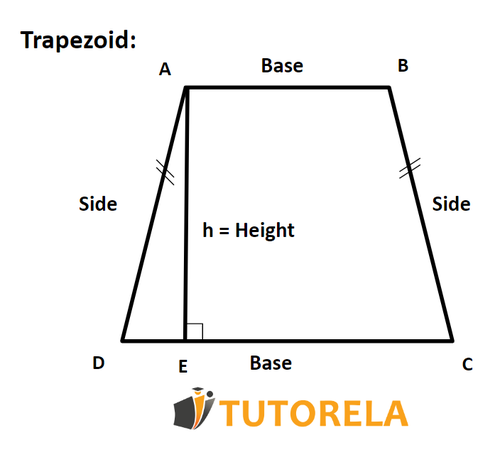The trapezoid is considered one of the most intimidating shapes for students, therefore we have decided to provide a summary of the general idea behind the trapezoid and explain its properties to them and introduce some types of trapezoids.
Trapezoid Practice Problems for 9th Grade - Area & Properties
Master trapezoid properties, area formulas, and angle calculations with step-by-step practice problems designed for ninth grade students learning quadrilaterals.
- Calculate trapezoid area using the formula with parallel bases and height
- Identify and classify isosceles, right angle, and standard trapezoids
- Find missing angles in isosceles trapezoids using angle properties
- Solve for unknown variables in trapezoid area problems
- Apply midsegment theorem to find missing trapezoid measurements
- Determine ratios between trapezoid segments and triangle areas
Understanding Trapezoids
Characteristics of the Trapezoid
A trapezoid is a quadrilateral based on 4 sides like any other,
but special in that it will always have two parallel sides also called bases, which we can call the larger base and the smaller base
and it will also have two opposite sides also called legs.

Practice Trapezoids
What is the area of the trapezoid ABCD?
Examples with solutions for Trapezoids
The trapezoid ABCD is shown below.
AB = 2.5 cm
DC = 4 cm
Height (h) = 6 cm
Calculate the area of the trapezoid.
First, let's remind ourselves of the formula for the area of a trapezoid:
We substitute the given values into the formula:
(2.5+4)*6 =
6.5*6=
39/2 =
19.5
Answer:
The trapezoid ABCD is shown below.
Base AB = 6 cm
Base DC = 10 cm
Height (h) = 5 cm
Calculate the area of the trapezoid.
First, we need to remind ourselves of how to work out the area of a trapezoid:
Now let's substitute the given data into the formula:
(10+6)*5 =
2
Let's start with the upper part of the equation:
16*5 = 80
80/2 = 40
Answer:
40 cm²
Given:
isosceles trapezoid.
Find x.
Given that the trapezoid is isosceles and the angles on both sides are equal, it can be argued that:
We know that the sum of the angles of a quadrilateral is 360 degrees.
Therefore we can create the formula:
We replace according to the existing data:
We divide the two sections by 4:
Answer:
30°
Below is an isosceles trapezoid
If
Determine the value of ?
Let's recall that in an isosceles trapezoid, the sum of the two angles on each of the trapezoid's legs equals 180 degrees.
In other words:
Since angle D is known to us, we can calculate:
Answer:
130°
The trapezoid ABCD is shown below.
AB = 5 cm
DC = 9 cm
Height (h) = 7 cm
Calculate the area of the trapezoid.
The formula for the area of a trapezoid is:
We are given the following dimensions:
- Base cm
- Base cm
- Height cm
Substituting these values into the formula, we have:
First, add the lengths of the bases:
Now substitute back into the formula:
Calculate the multiplication:
Then multiply by the height:
Thus, the area of the trapezoid is 49 cm.
Answer:
49 cm